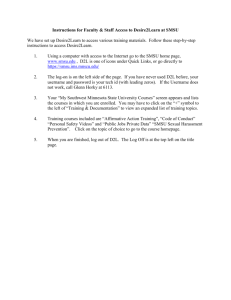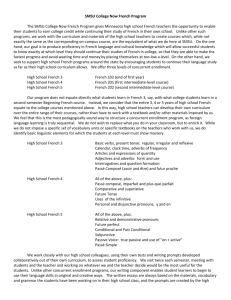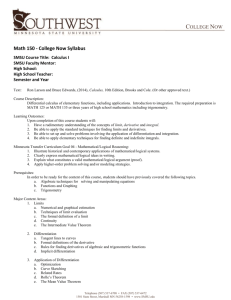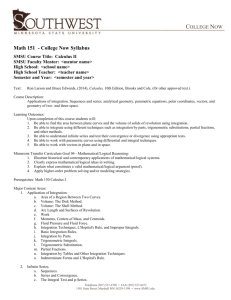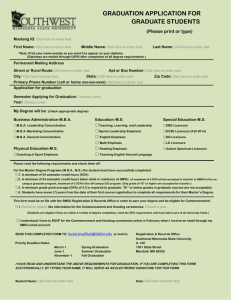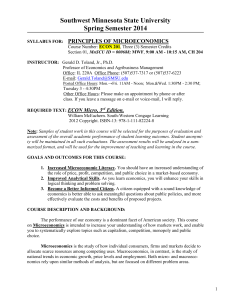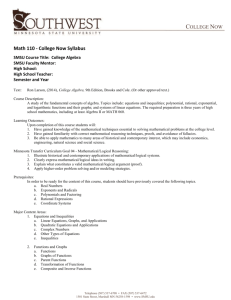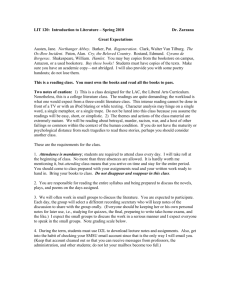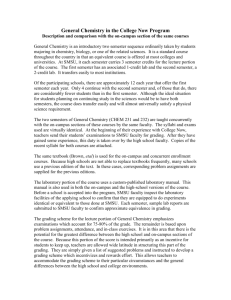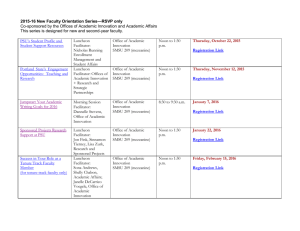What is music? - Missouri State University
advertisement
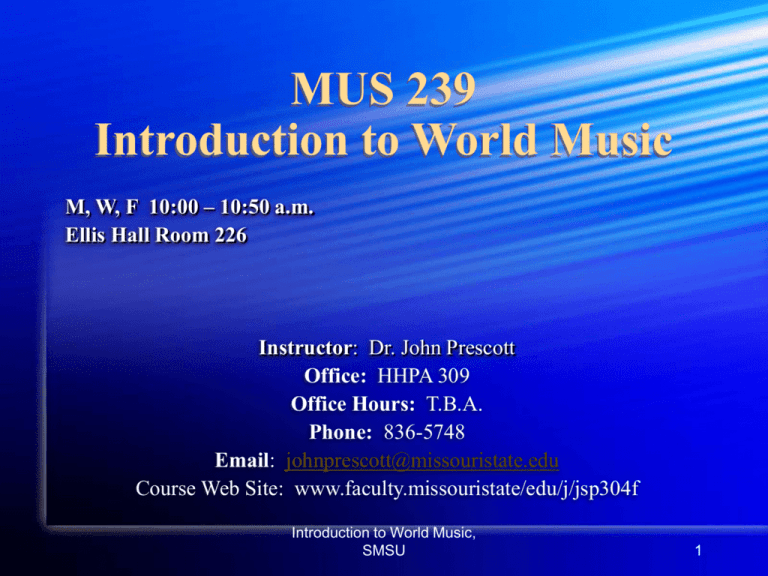
MUS 239 Introduction to World Music M, W, F 10:00 – 10:50 a.m. Ellis Hall Room 226 Instructor: Dr. John Prescott Office: HHPA 309 Office Hours: T.B.A. Phone: 836-5748 Email: johnprescott@missouristate.edu Course Web Site: www.faculty.missouristate/edu/j/jsp304f Introduction to World Music, SMSU 1 18 January 2006 Distribution of Syllabus Class Overview Student/Teacher Course Expectations Introduction to World Music, SMSU …text… (next page) 2 Text Titon, Jeff, ed. Worlds of Music, An Introduction to the Music of the World's Peoples. Shorter Version/Second edition. Belmont, California: Schirmer/Thomson Learning, 2005. http://www.wadsworth.com/music QuickTime™ and a TIFF (Uncompress ed) dec ompres sor are needed to s ee this pic ture. Introduction to World Music, SMSU 3 Reading Assignment for Week One Chapter 1 What are the four components of a Music-Culture? Can you hear and feel the metrical rhythm in the pieces you are listening to? Chapter 9 What type of music do YOU want to learn about? Introduction to World Music, SMSU 4 MUS 239 Introduction to World Music Chapter 1: The Music-Culture as a World of Music Introduction to World Music, SMSU 5 What is music? Soundscape: characteristic sounds of a place In general, music is sound that is humanly organized. Sometimes it’s not easy to separate sound and music. Introduction to World Music, SMSU 6 Patterns in Music Rhythm & Meter Melody Principal tune made of a succession of tones in particular rhythm Harmony Metrical rhythm: rhythm with recurring accent pattern Accompaniment to a melody Form Structural arrangement of musical ideas Introduction to World Music, SMSU 7 Harmony; Four Kinds Monophonic (distinct single melody) Homophonic (single melody with accompanying harmony) Polyphonic (more than one melody) Heterophonic (single melody but each instrument plays it differently) Introduction to World Music, SMSU 8 Ways of Looking at Musical Instruments: Classification (Sachs-Hornbostel Instrument Classification) Idiophone Membranophone Chordophone Aerophone (Electrophone) Introduction to World Music, SMSU 9 Idiophone: examples a percussion instrument, for example a gong or xylophone, that is made from resonating material that does not have to be tuned Introduction to World Music, SMSU 10 Membranophones: examples instruments that make sounds when a stretched skin (membrane) vibrates Introduction to World Music, SMSU 11 Chordophone: examples a stringed instrument Introduction to World Music, SMSU 12 Aerophones: examples A wind instrument; noise is made by pushing air through a tube. Introduction to World Music, SMSU 13 Lines are not always easy to draw There are hybrids such as tambourines or kazoo; distinctions can be fuzzy Greater interest now in insider’s words, context, style. Introduction to World Music, SMSU 14 Ways of Looking at the Cultural Elements that Surround and Give Meaning to Music Four Components of a Music Culture 1. Ideas about music 2. Activities involving music 3. Repertories of music 4. Material culture of music Introduction to World Music, SMSU 15 First: Ideas About Music Music and the Belief System Aesthetics of Music Contexts for Music History of Music Introduction to World Music, SMSU 16 Second: Activities Involving Music Basic aspects of social organization Status and role Other considerations Introduction to World Music, SMSU 17 Third: Repertories of Music Definition: stock of ready performances Style; combined elements Genres Texts Composition Transmission Movement Introduction to World Music, SMSU 18 •Fourth: Material Culture of Music Material objects that a culture produces, such as • Musical instruments • Paintings, documents, art • Scores, books, sheet music, books Impact of mass media Introduction to World Music, SMSU 19 Worlds of Music, General Comments Co-existent musics in most communities; musiccultures are dynamic rather than static; rarely “dies out; ” world is a fluid, interactive, overlapping soundscape Changes occur to meet expressive and emotional desires Ethnocentrism is generally not a positive element in the study of world musics Introduction to World Music, SMSU 20 Discovering and Documenting a World of Music Some Organizing Principles: Family Generation & Gender Leisure Religion Ethnicity Regionalism Nationalism Commercial Music Introduction to World Music, SMSU 21 Subject Options Chart the music you hear daily (journal, recordings, mappings, etc.) Examine music in your own background Explore music in your community Individual musician Introduction to World Music, SMSU 22 Research, Documentation & Reporting: some things to consider Gaining Entry Library & Internet Research Participation and Observation Ethics Gain permission Honesty Field Gear Interviewing (open questions, not leading) Sharing the information (Report) Introduction to World Music, SMSU 23 Homework Project Proposals Assignment No. 1 Online quiz on chapter 1, sent to my email by Monday, January 23, 5:00 PM. Your answers to questions 3, 11, 17, on pp. 29-30, and question 5 on p. 339, due in class Friday, January 27. Read Chapter 2: North America/Native America Introduction to World Music, SMSU 24
